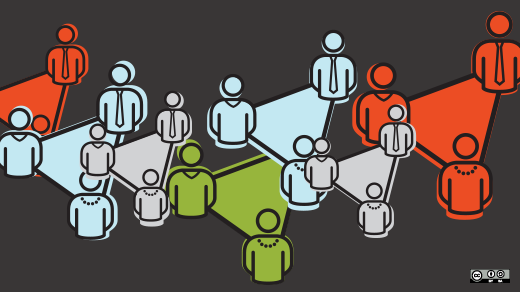The room was packed with almost 30 community managers from around the world. We were attending the Community Leadership Summit in Portland, Oregon and I was leading a session called Building programs and other ways to engage your community. During the session, I shared a few of the programs that we’ve implemented here on Opensource.com to foster community engagement. But the session wasn’t just about our community, it was an opportunity to hear from other community managers in open source out there in the trenches.
We had community managers from Mozilla, Open Source Institute, Puppet Labs, Chef, and other organizations. We talked about what’s working well and what’s not. What’s been tried and tested. And, who has new ideas? Together we came up with a list of techniques that can be used to keep our open source communities engaged.
1) Welcome new community members
Whether it’s in-person or virtually, make sure new community members get a warm welcome. For in-person events, consider having a designated greeter, preferably someone outgoing who wears a smile and is knowledgeable about your group or organization.
For a virtual welcome, an email greeting should work just fine. The more personal, the better. Never automate it. And it should be from your community manager or someone who might interact with the community at a later time.
2) Conduct a value assessment to determine interest or expertise
One community manager at the conference explained how they perform a value assessment to understand why someone has joined their community and how they want to participate. They do this about a week after the welcome email goes out and use the data to determine the next steps to take for community engagement.
A technique like this will not only help people find their "why," or place within the community, but it can also help community managers understand what they can do to help the community member thrive in the group.
3) Sponsor community members to attend events
Many organizations will cover expenses for people to attend events. This allows them to have in-person meetings and face-to-face time with other community members. The relationships formed from being at in-person at meetings, conferences, and other events can give a real boost to community members.
4) Break down the silos
Another community manager at the conference shared a technique they use within their organization to help break down barriers to entry to a community or engagement within that community. On a monthly basis, this community manager organizes an online meetup to promote community engagement. They ask members what they want to learn about, help them find a source matter expert, then host a meet-up on the topic. The community gets extreme value out of these events, and their overall community engagement has increased.
While this example was referring to breaking down silos within a large corporate organization, I think the idea has merit and can be applied to groups of all kinds .
5) Say thank you
In many communities, the words "thank you" are not used enough! Say thank you, and then thank that person or group again. In our session, we came up with a list of several ways that you can thank your community as well as individual members.
- Send them stickers.
- Give them a shout-out in your newsletter or blog, on social media, etc.
- Tag people and post pictures in social media (be sure to get permission first).
- Send them T-shirts, hats, or other swag.
- Feature them in a “community spotlight” in newsletters or on your website homepage.
- Thank every contributor who contributed code or content at certain milestones (perhaps during project releases).
- Send them a handwritten letter.
- Celebrate with your community or support a way for them to celebrate on their own.
- Provide them sponsorship to attend an event.
While the session only lasted an hour, the ideas we shared during it will live on and continue to evolve as our communities change and grow. Community managers and others can join the conversation in the Community Leadership Summit online forum. And as always, I welcome you to share some of your experiences in the comments.






3 Comments